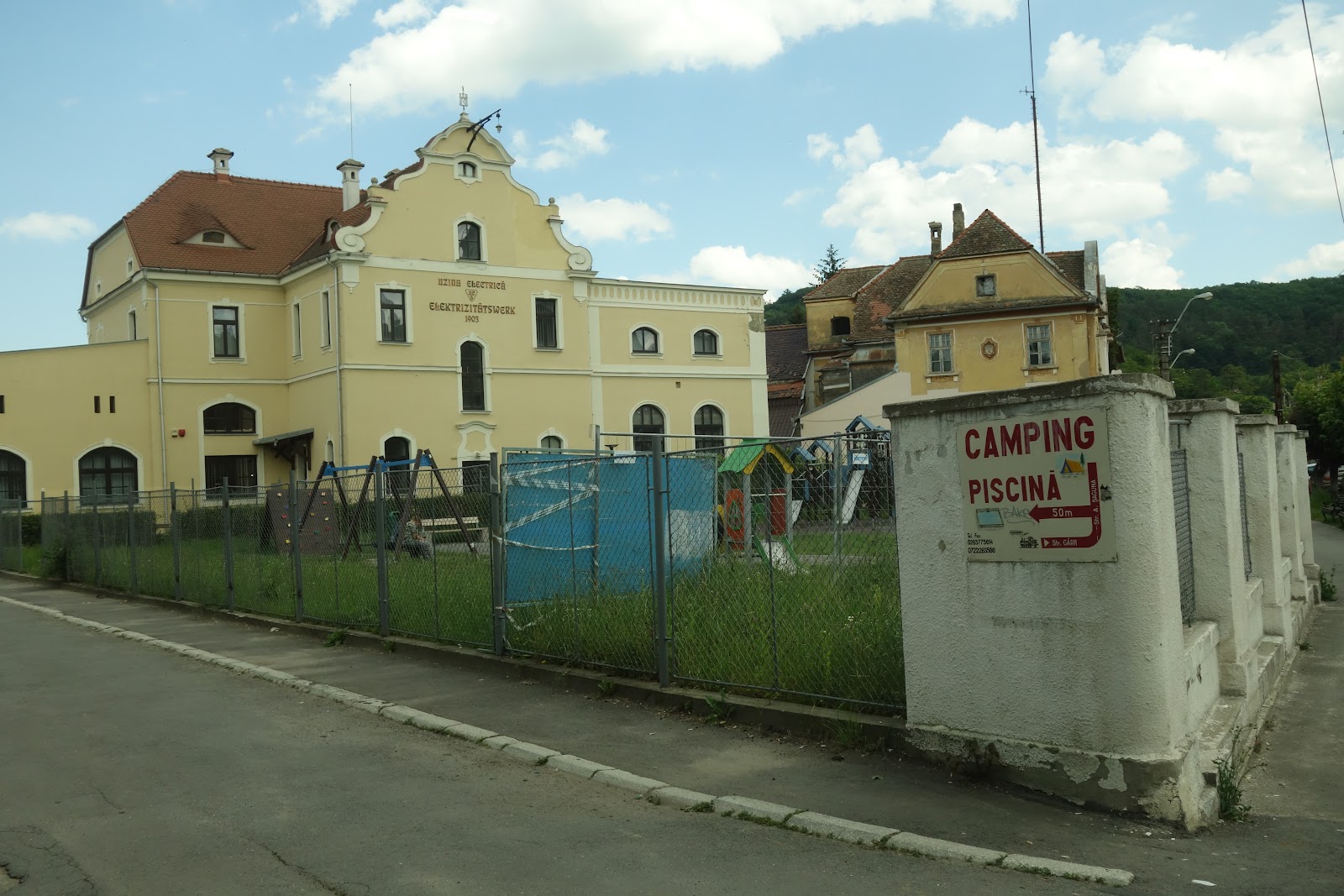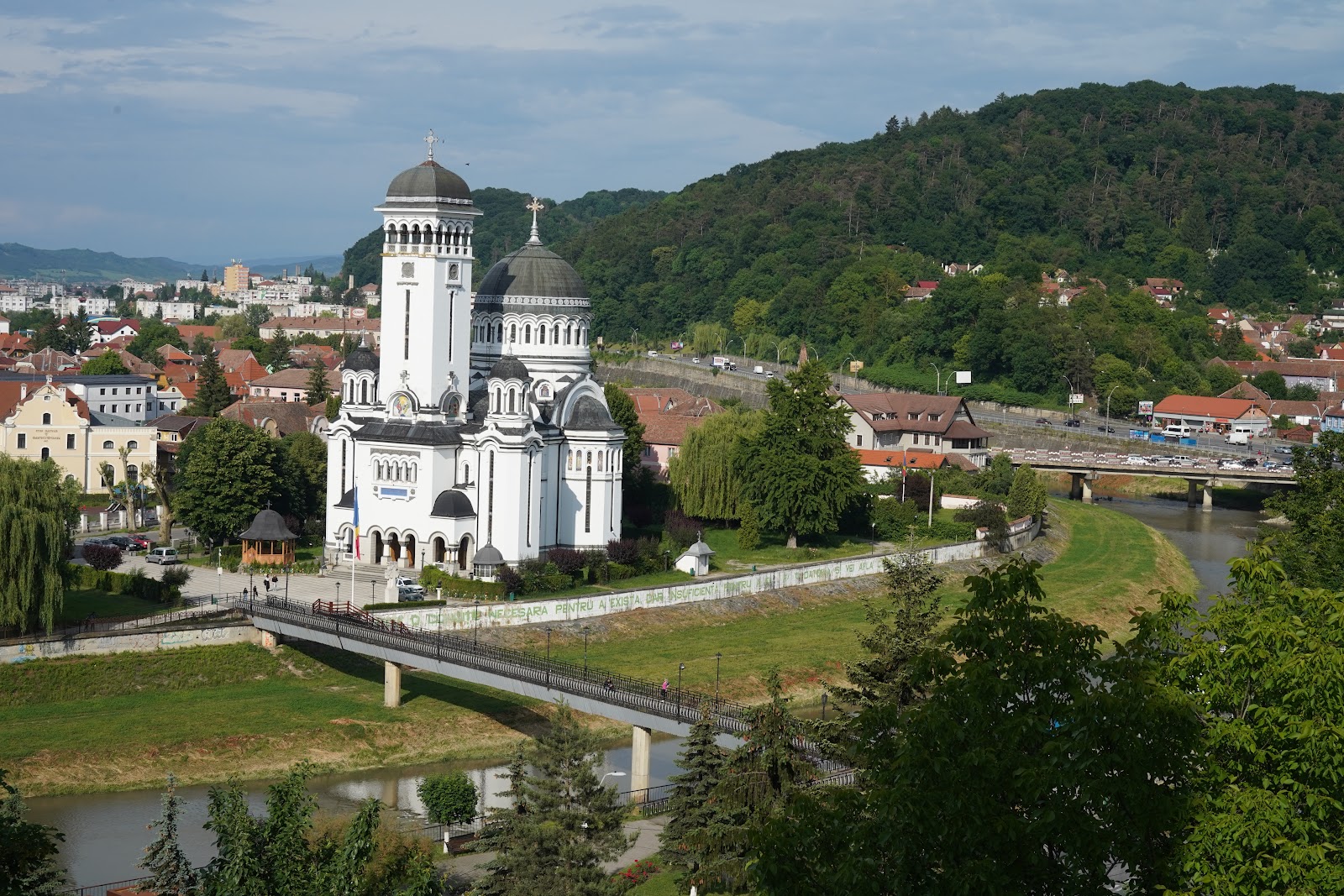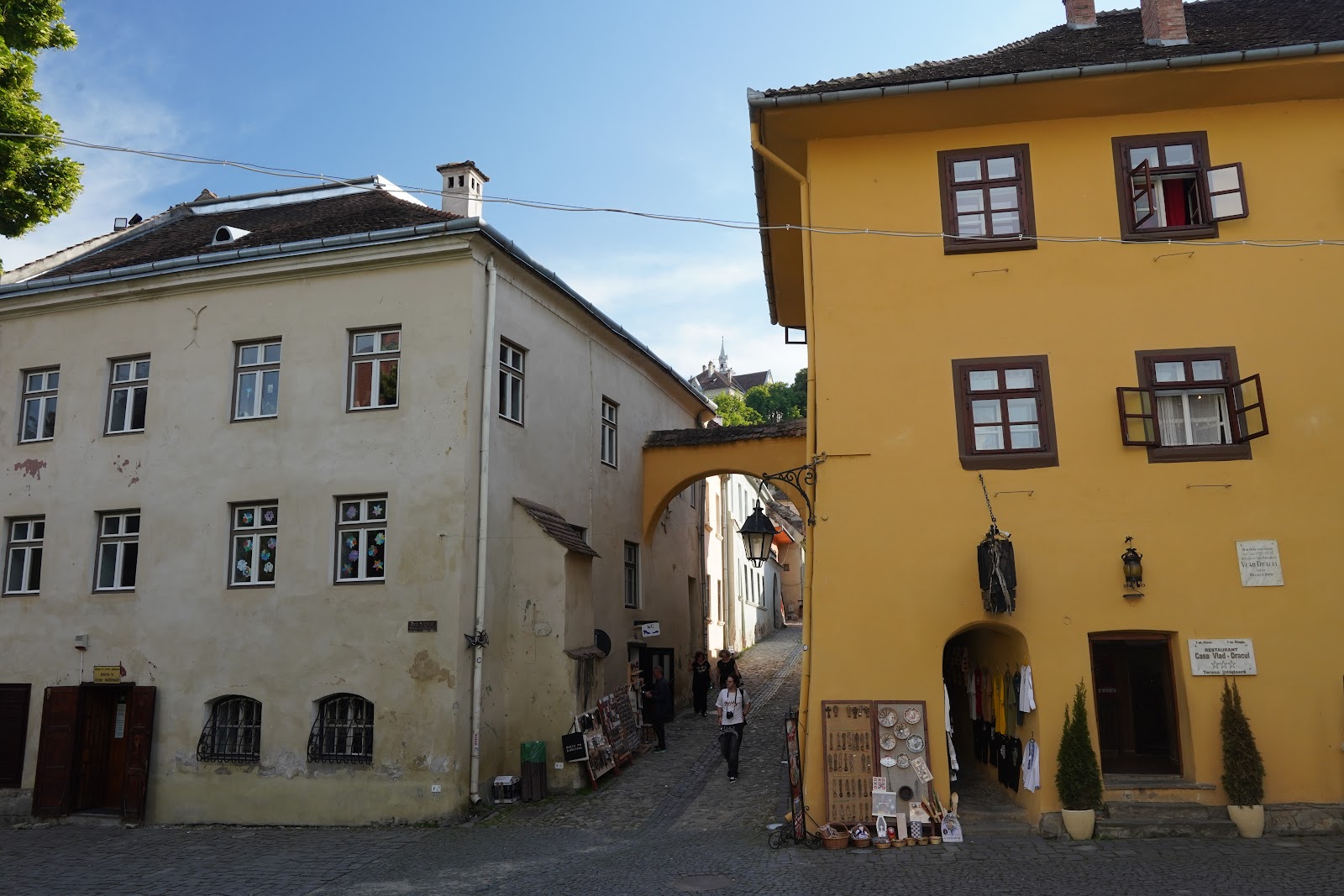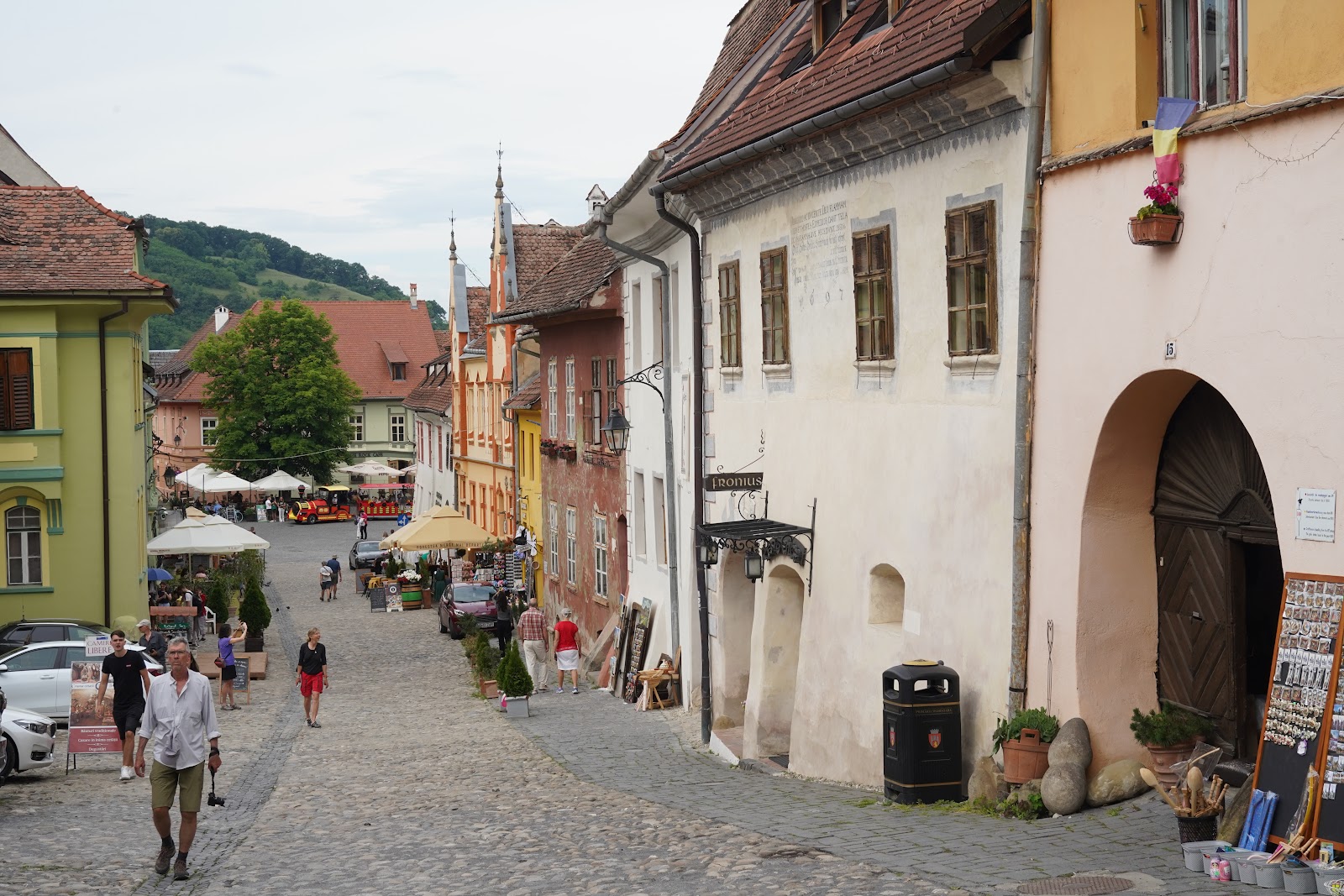The transsylvanian dream
After writing until past midnight I wake up at 6.30 am. I have still not decided where to go next. There is the favorite option to go to Viseu de Jos and visit the mountains bordering Ukraine. But that would mean that I would have to stay at least another week in Romania. Reaching Anatolia in general and Kars in particular would then get difficult. I had thought about an alternative, visit Alba Iulia, a fortress south of Cluj, and make my way from there to Bucuresti maybe via Sibiu. But the train connections after Alba Julia are horrible. They are rebuilding a lot of lines around here and there are few trains at impossible time.
What to do? At 6.34 am I grab my phone and search for connections. At last I make up my mind to go to Sighisoara as goal for the day. There is a train at 10.15 am but it needs a reservation. From there it should not be a problem to take a direct train to Bucuresti.
I pack my stuff and go for breakfast. There is still plenty of time before I need to go to the station. The breakfast room is empty but it fills up quickly after I had got my food from the buffet and settled down to eat. Mostly young Germans. At last it is so full that two girls have to sit down next to the old pervert. It turns out that they are architectural students from Darmstadt on a study visit to Cluj. They have visited the university and the salt mines at Turda. What is striking is that they came by train. But their night train was canceled for the way back and now they have to go by bus to Oradea. One of them has been on interrail trips herself, but so far only to the west. I enjoy to talk to these young people. It is too late to regret that I did not pursue a university career. But for now I have to go to the station to get my reservations.
Although the puddles from yesterday’s rain are still on the sidewalk it is already hot and I soon start sweating profusely. It is only a walk of 15 min to the station. I take a quick picture of the steam engine set on a plinth there – many Romanian stations have one - and then file at the ticket counter to get my reservations. The woman is not in particular friendly. She wants to see my interrail ticket. I show her the number on a piece of paper I have prepared. She insists on seeing it on the phone. But then I cannot show her the connection I want. Eventually she looks at my piece of paper and the connection on the phone and for 5.50 Lei produces a reservation ticket for the train to Sighisoara at 10.15 am. There is no indication of the interrail pass number on the reservation ticket and not even that it is connected to interrail. Then I ask for a reservation for continuing the trip to Bucuresti on the same train from Sighisoara the next day. She gets a bit impatient and after consulting her computer she tells me that the train is full. A later train as well. I try Brasov, which is more than half of the route. There is still space on the earlier train to Brasov, so I get another reservation from Sighisoara to Brasov.
I still have to wait for about 15 minutes until the train to Bucuresti pulls in behind an electric engine made up like a fashion model. The train is indeed quite full but some seats stay empty for my whole trip, among others the one next to me. It is interesting to see how helpful people are here on the train. Men get up to heave luggage in the overhead racks for others. Information is exchanged in a friendly manner. Only I do not understand a word.
An Englishman struggles through the corridor with a wide and heavy backpack. With his bald head, sleeveless shirt, tattoos and baggy pants he is in stark contrast to the well-dressed Romanians around me. His roll-up mattress gets stuck at the seats and bonks against the seated travelers. Liquor vapor fills the wagon. Nobody complains.
There are several ticket checks, first by the conductor and than by a couple who come with the conductor and call themselves controller. There are discussions with some passengers about their ticket but nobody asks for my reservation.
Village along the line
The trip to the intermediate station of Teius is very slow. They are rebuilding the line. For long stretches only one track is available. After Teius we ride on the line which they were busy reconstructing when I was here last time in 2021. Here the train goes quite fast. The dilapidated atmosphere of the stations is gone. They are supposed to use an underpass now. No elevators.
The trains climbs up mountains covered in grassy meadows which look like blankets spread across the slopes. Transsylvania means “across the forest”. In this area there is no forest left. Sometimes a pointed church tower of a reformed church or a shiny cupola of an orthodox church on a mountain top on the horizon. From time to time a corral or a little farm. The farm buildings look new and prosperous for the little patches of vegetable garden they are built in. The last part of the trip the line follows the valley of a river. All the bridges are new. Sometimes there is an abandoned industrial estate, a chimney in the middle of nowhere, some walls or some ruins.
I can remember the state of the station in Sighisoara from passing through 3 years ago. It was a mess. Now the platforms are rebuilt. They have integrated the beautiful station building in a nice way. Still only stairs and no lift. Somebody manages to get a bicycle down and up the stairs, but he is young. I look for a ticket counter and there is one indeed open. I ask for a reservation, this time on the later train and not only to Bucuresti but all the way to Constanta. And this time the lady is not only much friendlier but she also manages to sell me the desired reservation. The train will only arrive at Constanta at 23.00 and pass through Bucuresti, so I will see how far I will actually go.
I have reserved a hotel in the old center of Sighisoara, which is called the fortress. The old town of Sighisoara is recognized as a monument by UNESCO for the next to perfect conservation of a medieval artisans and merchants town including defensive wall.
Already after leaving the station I get a good impression of the various people coming through this area in the course of history. I pass the monument for the Russian army liberating the town from Fascism at the end of world war II and the graves for fallen Russian soldiers. All is well maintained.
Then there is the old electricity works of the town. It still displays the German inscription “Elektrizitätswerk”. Next to the river is the big orthodox church, again rather new because under Austrian rule orthodox churches were not allowed.
Also here the Romans have left there traces. In Roman times the place was called Castrum Sex or Saxoburgum. They have unearthed a Roman pottery oven, which is displayed at the other side of the footbridge spanning the river. A little further, in the lower part of the old town, there is the same statue of Romulus and Remus and the wolf as in Cluj. A plaque reminds of the common roots with mother Rome. It looks like Rome has distributed these statues all over the former Roman empire.
The old town is on a hill on the other side of the river. First I have to get up the hill loaded like a donkey as I am. I start the climb up a long fight of uneven stairs to the fortress. When I end up at the top I arrive in a kind of fairy tale. Colorful old houses line cobbled streets. Only the residents can drive their car into the old town. There are numerous street cafes. Tourists, even some chinese, roam the streets. The old town is small, there are only 3 parallel streets and even there the tourists are concentrated in the very center.
I have reserved one of the best hotels in the fortress, and for once it was a good decision. It is one of the old traditional mansions, beautifully decorated and there is a quiet backyard where I can eat dinner and write these words.
In the 12th century the Hungarian king Géza II invited German craftsmen and merchants to settle at what was called Segesvár in Hungarian. The settlement quickly grew and became an important royal town. It also was a strategically important fortress and an important trading post. As such it also attracted famous artisans from other parts of the German empire. As an example, the famous Nuremberg sculptor Veit Stoss (see chapter 3) arrived here with his sons and some of their works are preserved in the area and in the Monastery church in the town center.
The monastery church built in the 13th century was the only one with a bell. The reason was the economics of the German Saxons. They were of the opinion that one was enough for the whole city. In the church, the boards indicating the chorals to be sung, are in German. Many of the works of arts displayed in the church were brought here from other churches in the countryside. In the years after 1945 in many countryside villages the German Saxons, the main believers visiting the churches died out or emigrated to Germany. Those village churches were left empty and were prow to pillaging. Whole altar pieces were stolen. It was safer to bring them to Schässburg, as the town was called in German. I talk to the Guardian. It was no problem in Ceausesceaus Romania to belief and go to a church as long as you did not connect to politics.
In the period of 1606 – 1666 the town’s chronicler was a Georg Kraus. From his records it is well documented what happened in the town in the 17th century and before. There were constant disasters like war, the plague, but also celebrations like the election of George I Rákóczi as Prince of Transylvania and King of Hungary in 1631.
The most prominent sight of Sighisoara is the clock tower. It also serves as the port of access for the steep street leading up from the lower town. It is 64 m high and can be seen from almost everywhere in town. There is a gallery on the top floor but the most special feature is a clockwork with seven figures representing the seven days of the week, seven ancient gods, seven planets and seven basic metals.
Vlad the Impaler, the historical character who inspired the Bram Stoker's Dracula, is supposed to be born in 1431 in Sighisoara. During yet another Turkish invasion his father Vlad Dracul was the ruler of Wallachia and stayed in this house with his pregnant wife. At the time it was the house of the mayor of Sighișoara. It probably is the oldest house of the city.
Begin of the 21th century somebody wanted to built a Dracula theme park in the forests of a nature reserve close to Sighisoara. It speaks for the locals that they strongly opposed the plans and the park was never built.
The stag house is the best preserved house in the old town. At a corner of the first floor there is a painting of a stag and antlers protruding from the wall. It was built in the 17th century but there is no record why it bears the antlers.
Covered stairway to the church on the hill
There is a long covered stair case leading up to the hill above town. The climb is made easier by somebody who plays guitar with an amplifier at the top. He plays so beautifully that the music basically drags you up the steep stairs.
The top of the hill above the old town is crowned by the church of the hill. It is the only church in Transsylvania with a crypt. The crypt was ravaged several times by robbers and a couple of the vaults are open. In one you can see the scull and hair of the remainders.

The wooden boxes to store valuables were collected from private houses
Vault in the crypt with the remains of a corpse
Next to the church is the building of the school of the hill which dates back to 1522. Even in communist times it was a school teaching in German and still now it teaches in both German and Romanian.
The German cemetery covers the slope of the hill leading up to the church. The graves make curious. There is a grave of a German, born in 1944, whose profession is designated Prof jur. Did he teach communist law? What was his role? Most of the graves are old, before world war II, but there are also some recent ones. The latest I discover is from 2017.
“It is a small world”
“When you put it in a cemetery it is” (Kurt Vonnegut, The cat’s cradle)
It is a peaceful and lovely graveyard. The birds are singing. I am tempted to lie down amongst the plates covering the coffins.
Today only 1.5% of the population of Sighisoara are of German origin. Nevertheless, the German Saxon tradition is held high. The street names are bilingual in Romanian and German. There still is the German school. And of course, there are lots of German tourists. Guides give tours in perfect German. On the other hand, more than 17% of the town’s inhabitants are Hungarian and more than 5% Roma. Nothing in the town points at their existence.
In my hotel, while I have dinner, there are two German-Romanian families. They are living in Germany but come back here to see their roots and visit relatives. The little kids love it here. It is their second home.
I spend the evening in the backyard. The folk music played from Spotify is intriguing. I am almost moved to tears about having found such a peaceful spot. I don’t want to leave. With every beer I get happier.
Sources:
Link to previous post:









































No comments:
Post a Comment